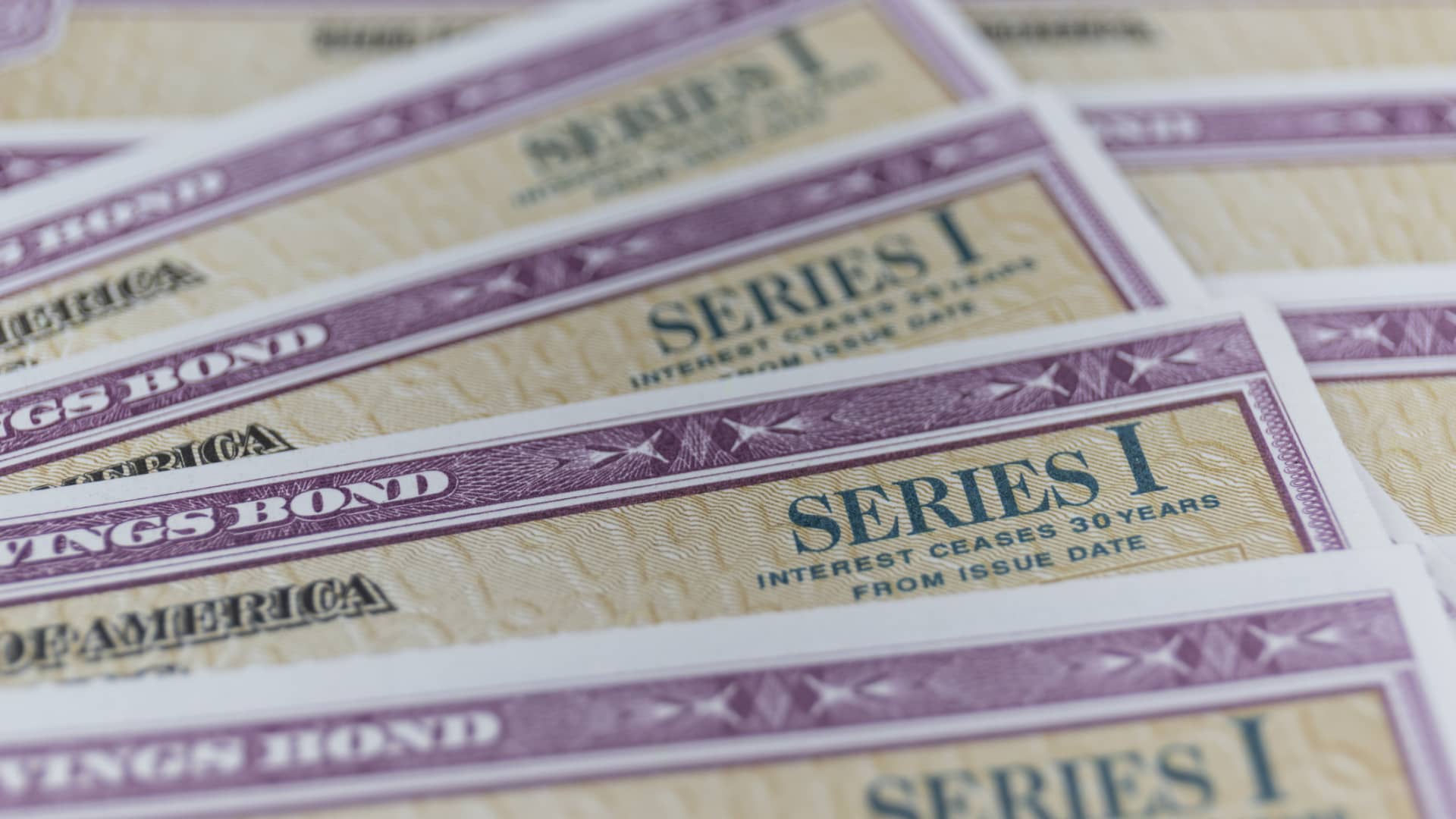The annual rate for newly purchased Series I bonds could rise above 5% in November based on inflation and other factors, financial experts say.
That would be an increase from the current 4.3% interest on I bond purchases made through Oct. 31. But it’s less than the 6.89% rate offered on I bonds bought between November 2022 through April 2023.
Backed by the U.S. government, demand for I bonds exploded over the past couple of years amid high inflation — and the November rate could be the fourth-highest yield since I bonds were introduced in 1998.
More from Personal Finance:
Here’s the inflation breakdown for September 2023 — in one chart
Social Security announces 3.2% cost-of-living adjustment for 2024
A recession may still be in the forecast. Here’s how you can prepare
The U.S. Department of the Treasury adjusts I bond rates every May and November and there are two parts to I bond yields: a variable and fixed portion.
The Treasury adjusts the variable rate every six months based on inflation. It can change the fixed rate every six months, too, but doesn’t always do so.
(The fixed portion of the I bond rate remains the same for investors after purchase. The variable rate portion resets every six months starting on the investor’s I bond purchase date, not when the Treasury Department announces rate adjustments. You can find the rate by purchase date here.)
Currently, the variable rate is 3.38% and the fixed rate is 0.9%, for a rounded combined yield of 4.30% on I bonds purchased between May 1 and Oct. 31.
Based on six months of consumer price index data, experts say the variable component is likely to rise to 3.94% in November, up from the current variable rate of 3.38%. That variable rate will change again in May 2024.
The I bond fixed rate could increase
While the variable I bond rate can be calculated, based on the inflation changes over six months, the fixed rate portion is harder to predict, experts say.
“The big question is what the fixed rate is going to be,” said Ken Tumin, founder and editor of DepositAccounts.com, which tracks I bonds, among other assets.
The Treasury doesn’t disclose exactly how it decides on the fixed rate for I bonds, but Tumin expects it will rise based on higher yields from 10-year Treasury inflation-protected securities, or TIPS, another government-based, inflation-linked asset.
“That [fixed rate component] will be really impactful for long-term I bond investors,” he said.
That will be really impactful for long-term I bond investors.Ken TuminFounder and editor of DepositAccounts.com
David Enna, founder of Tipswatch.com, a website that tracks TIPS and I bond rates, said “there are a lot of theories” about how the Treasury decides on the fixed rate, including market yields on TIPS, among other factors.
Enna also expects the fixed I bond rate to rise in November, depending on the spread between the current 0.9% fixed rate and the real yield of 10-year TIPS. The real yield reflects how much TIPS investors earn yearly above inflation until maturity.
If you expect real yields for 10-year TIPS to stay in the 2.3% to 2.4% range for the next six months, the Treasury “would be justified” to raise the fixed rate on I bonds to 1.4% or 1.5%, he said.
